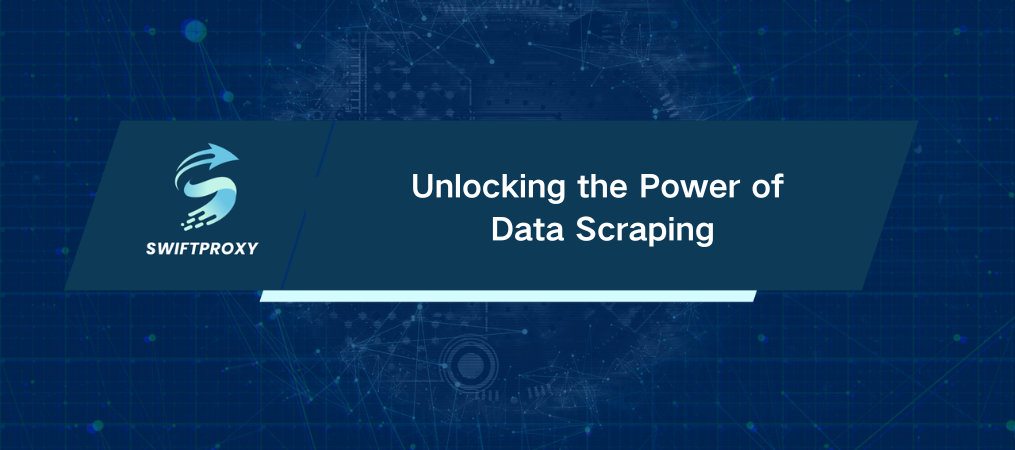Unlocking the Power of Data Scraping

The digital age has transformed how businesses access information. Gone are the days of manually sifting through pages of data. Now, data scraping makes it possible to extract structured information from websites at the click of a button. This automated process is revolutionizing industries, from AI development to e-commerce, and it's time you understood how it works and why it's crucial for your business.
Data Scraping vs. Web Crawling
Scraping and crawling—often used interchangeably—serve distinct purposes. Scraping is about pulling specific information from web pages: think product prices, user reviews, or financial data. Crawling, on the other hand, is more like surveying an entire city—it's the process search engines use to map the web, discovering and indexing new pages.
Picture this: a crawler is like a tourist with a map, exploring the web's streets to discover new landmarks. Meanwhile, a scraper is focused on photographing the key spots—gathering valuable data from sites you already know.
The Mechanics of Data Scraping
In a nutshell, scraping involves several key components that work together seamlessly:
Request Handler: It's the gatekeeper, communicating with websites and managing everything from simple requests to more complex logins.
HTML Parser: After pulling the page, this component breaks down the raw data into something useful, processing everything from static content to dynamic, JavaScript-driven elements.
Data Processor: It's like a filter, cleaning and organizing the scraped information into a structured format like CSV or JSON.
Storage System: Finally, it's all about saving and organizing the data for easy access later. This could mean saving it in databases or spreadsheets.
But it's not all smooth sailing. Legal concerns are real—scraping can violate terms of service or even data protection laws. Always double-check a site's terms and conditions before scraping, and ensure you're not crossing any legal lines.
The Versatility of Data Scraping Across Industries
Data scraping is reshaping industries left and right. Let's look at how some sectors are leveraging this game-changing tool.
AI Research: AI models thrive on massive datasets. Scraping enables AI teams to collect data from diverse sources, training machine learning algorithms with everything from text to images. However, this comes with its own set of hurdles, like data consistency and the need for real-time updates.
E-commerce: Stay ahead of competitors by scraping data on pricing, inventory, and market trends. E-commerce businesses use this information to optimize product pricing and adapt to changes swiftly—essential for keeping pace with market shifts.
Information Security: Scraping helps security experts stay ahead of cyber threats by monitoring online forums, news sites, and other digital sources for suspicious activity. With the sheer volume of data out there, real-time scraping techniques are critical.
Brand Protection: Track counterfeit products, trademark violations, or unauthorized sellers across the web. Data scraping helps you protect your brand by identifying these issues before they escalate.
SEO & SERP Monitoring: Want to keep your rankings at the top? Scraping lets you track keyword positions and monitor search engine algorithms. By analyzing competitor performance, businesses can optimize their content to boost visibility.
Travel and Hospitality: Scraping real-time data on flight prices, hotel availability, and customer reviews gives businesses the competitive edge to manage pricing and inventory effectively.
Types of Data You Can Scrape
From basic text to dynamic content, today's scraping tools handle a variety of data types, such as:
Textual Data: Articles, blogs, reviews—crucial for market analysis, customer sentiment, and marketing.
Numerical Data: Prices, stock market info, financial reports—essential for e-commerce, finance, and competitive analysis.
Image Data: Track product placements, verify brand usage, or enhance AI models with visual content.
Video Data: Analyze content, protect intellectual property, or power AI-based video recognition.
Choosing the Right Scraping Method for Your Needs
Not all scraping methods are equal, and selecting the right one depends on your goals. Here's a rundown:
Web Scraping APIs: The easy route for large-scale, real-time scraping. These tools handle structured data extraction with minimal setup.
Custom Scrapers: Need total control? Build a scraper using Python or JavaScript. Custom scrapers are perfect for large, complex projects but require coding expertise.
Screen Scraping: Ideal for dynamic content like images or JavaScript-rendered pages.
AI Scraping: When you need to extract unstructured or complex data, AI-driven tools are your best bet.
Manual Collection: For small-scale projects, manually copying data works—but it’s time-consuming and impractical for large datasets.
No-Code Scrapers: Perfect for beginners who need simple data extraction without coding skills.
Overcoming Scraping Challenges
While scraping is incredibly powerful, it's not without its challenges. Websites are continuously evolving anti-scraping measures to block bots. Here's how you can handle common hurdles:
IP Blocking: Rotate IP addresses to prevent being blocked after repeated requests.
CAPTCHAs: Bypass CAPTCHAs with CAPTCHA-solving tools.
Rate Limiting: Respect request limits or use proxies to avoid triggering rate limits.
Bot Detection: Emulate human behavior by randomizing request patterns and using rotating user agents.
Dynamic Content: Scraping sites with JavaScript requires tools that can render the page before extracting data.
Legal Compliance: Stay within the legal boundaries to avoid fines or shutdowns. Always review a site's robots.txt file and terms of service.
The Future of Data Scraping
As the digital landscape evolves, so does scraping technology. Expect more AI-driven solutions that can handle unstructured data more efficiently and adapt to sophisticated anti-scraping measures. However, as businesses collect more data, ethical and legal considerations around privacy and protection will become increasingly important.
The future is bright for data scraping, but it's crucial to stay ahead of the curve. From AI to e-commerce, scraping will continue to be the backbone of decision-making in countless industries.
The Bottom Line
Data scraping has evolved into a competitive advantage. Whether you're in AI, e-commerce, cybersecurity, or another industry, the ability to collect real-time, structured data enables informed decision-making. To succeed, you need the right tools, strategies, and an understanding of the challenges and ethical considerations involved. Keeping your business agile and data-savvy is key. It's time to scrape smarter, not harder.

















































